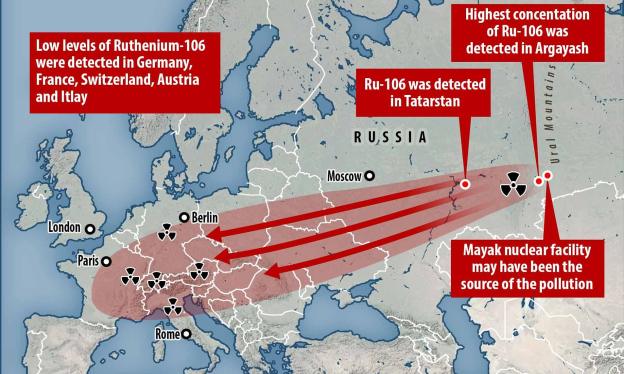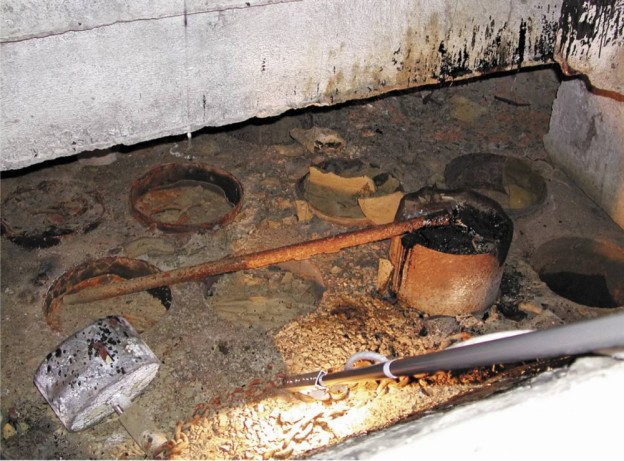The probable culprit behind a mysterious cloud of radioactive particles detected floating above much of Europe in 2017 appears to have been identified. The radiation spike – in the form of an extremely high airborne concentration of the radioactive isotope ruthenium–106 – was detected by scientists in October 2017, but the source of the dramatic radiation surge (almost 1,000 times normal levels) was never definitively confirmed. At the time, many speculated that nuclear facilities in Russia were responsiblefor what was perceived as an accidental ruthenium–106 release – despite denials at the time by Russian authorities.
Now new research looks to back up the Russian origin hypothesis, according to an international team of almost 70 scientists led by radionuclides researcher Olivier Masson from the Institut de radioprotection et de sûreté nucléaire (IRSN) in France. “Based on airborne concentration spreading and chemical considerations, it is possible to assume that the release occurred in the Southern Urals region (Russian Federation),” the researchers explain in their new paper.
In what they claim is the most comprehensive assessment of the incident to date, Masson and his team analysed over 1,300 readings taken of the radioactive cloud, recorded by 176 measuring stations in almost 30 countries. While the airborne radioactive matter released was not harmful to human health, it nonetheless constituted the most serious release of radioactive material since the Fukushima accident in 2011 – with maximum values of 176 millibecquerels of the isotope per cubic metre of air.
Shortly after the release, Russian officials suggested the radiation surge might have been due to a crashing satellite, with the isotope being released from the battery of a spacecraft re-entering Earth’s atmosphere. “The measurements indicate the largest singular release of radioactivity from a civilian reprocessing plant,” says one of the researchers, radioecologist Georg Steinhauser from the University of Hanover. Specifically, the new evidence – based on modelling of air mass movements around the time of the accident – indicates Russia’s Mayak nuclear complex in the southern Urals “should be considered as a likely candidate for the release”, the researchers conclude…
If the researchers’ modelling is correct, the accident occurred sometime in late September 2017, on either the 25th or 26th of the month – almost exactly 60 years to the day after one of the worst nuclear accidents in history at the same site: the Kyshtym disaster, ranked as the third most serious nuclear accident ever on the International Nuclear Event Scale.
Excerpts frorm PETER DOCKRILL, Mysterious Radioactive Cloud That Blanketed Europe Traced to Russian Nuclear Facility, Science Alert, July 30, 2019

